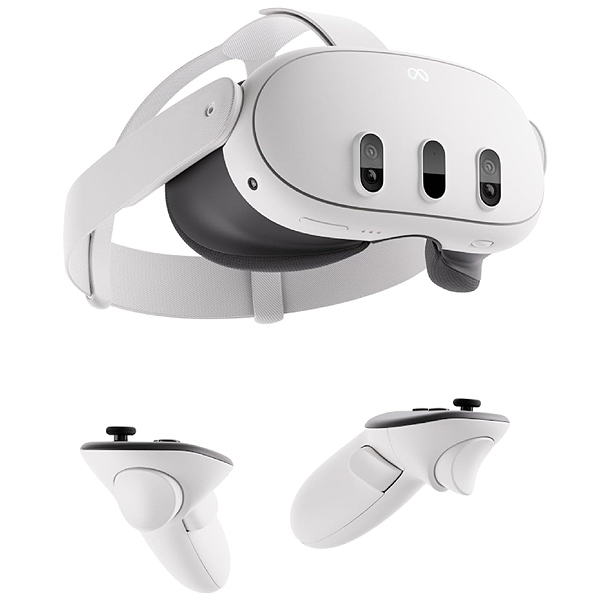The Meta Quest 3 has arrived, ushering in the next generation of virtual reality gaming. As a VR enthusiast who’s been immersed in the technology for years, I was eager to put this headset through its paces. After extensive testing, I can confidently say that the Quest 3 represents a significant leap forward in standalone VR. Let’s dive into what makes this device so compelling.
Table of Contents
Design and comfort : A sleeker, more refined experience
The first thing that struck me about the Meta Quest 3 was its streamlined design. Meta claims it’s 40% slimmer than its predecessor, and while that figure excludes the facial interface, the difference is noticeable. The headset protrudes about an inch less from your face, reducing the front-heavy feel that plagued earlier models.
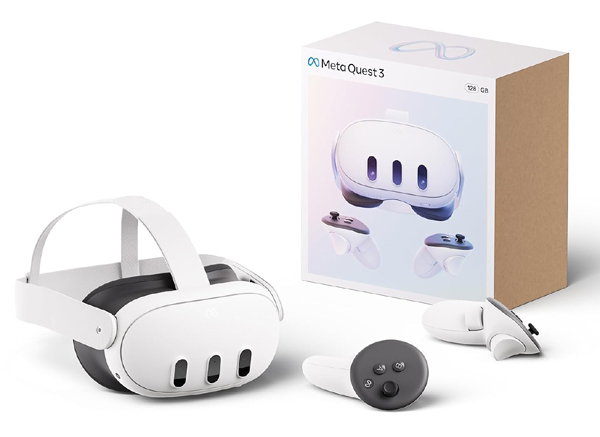
Comfort has been improved in other ways too. The soft cloth head strap has been redesigned for easier adjustment, providing a secure fit without excessive pressure. During intense Beat Saber sessions, I found the Quest 3 stayed firmly in place without causing discomfort. For those wanting even more support, Meta offers an optional Elite Strap for $70.
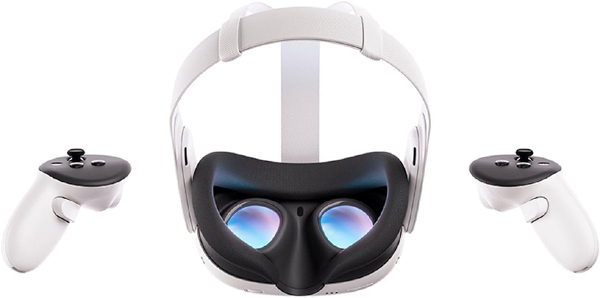
One area where Meta has clearly listened to user feedback is IPD (interpupillary distance) adjustment. Unlike the Quest 2’s limited three-position system, the Quest 3 offers continuous IPD adjustment from 58mm to 70mm via a convenient rotary dial. This flexibility ensures a clearer image for a wider range of users.
The Quest 3’s refined design and improved comfort make long VR sessions more enjoyable than ever before.
However, it’s not all positive on the design front. The facial interface, while comfortable, uses foam padding that absorbs sweat and isn’t easily removable for cleaning. Meta sells a silicone-covered version separately, but it would have been nice to see this included in the base package.
Visual and audio enhancements : Pushing the boundaries of immersion
The Quest 3’s visual upgrades are immediately apparent. Dual 2064×2208 LCD displays provide 30% higher pixel density than the Quest 2, resulting in noticeably sharper text and more detailed environments. This improvement is particularly evident when using the headset for productivity tasks or when playing graphically demanding games like Microsoft Flight Simulator (when tethered to a PC).
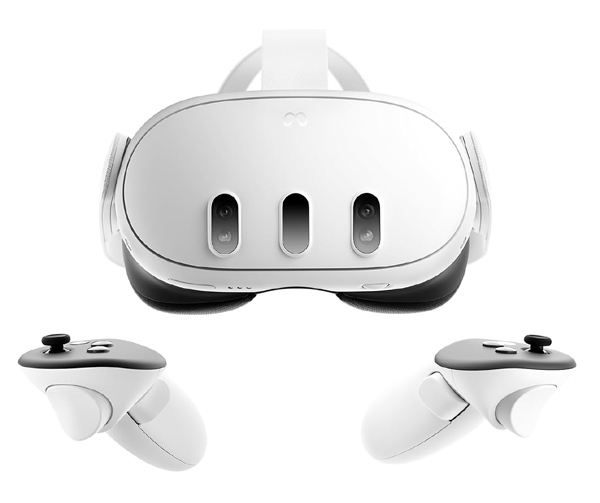
Perhaps even more impressive is the shift from Fresnel lenses to pancake lenses, a technology first introduced in the pricier Quest Pro. This change brings several benefits :
- Improved edge-to-edge clarity
- Reduced lens glare
- Wider 110-degree field of view
- Support for 120Hz refresh rate at launch
The audio system has also seen improvements. While still using off-ear speakers, the Quest 3 delivers clearer sound with less distortion at high volumes. For those preferring more immersive audio, there’s a 3.5mm jack for wired headphones, though Bluetooth support remains limited due to latency issues.
As someone who’s spent countless hours in VR, I can attest that these visual and audio enhancements significantly contribute to a more engrossing experience. Whether you’re exploring alien worlds or attending virtual meetings, the Quest 3’s improved fidelity makes everything feel more lifelike.
Performance and gaming : Unleashing new possibilities
At the heart of the Quest 3 lies the Snapdragon XR2 Gen 2 chip, boasting up to 50% more power than its predecessor. This translates to smoother performance across the board, even in graphically intensive titles. During my testing, I encountered zero framerate dips, even in fast-paced games like Pistol Whip.
The true potential of this hardware becomes evident in games optimized for the Quest 3. Red Matter 2, for instance, received a patch enabling 4K textures, dynamic shadows, and improved visual effects. The difference is striking, with sharper models, more detailed environments, and an overall polish that pushes the boundaries of what’s possible in mobile VR.
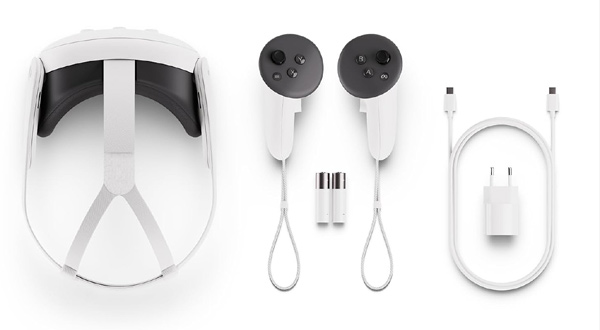
It’s worth noting that the Quest 3 is fully backwards compatible with the Quest 2’s extensive library of over 500 games. This means new users have immediate access to a wealth of content, while existing Quest owners can seamlessly transition without repurchasing their favorite titles.
The Quest 3’s powerful hardware opens up new possibilities for developers, paving the way for more visually impressive and immersive VR experiences.
One of the Quest 3’s standout features is its full-color passthrough capability, enabled by two 4MP RGB cameras and a depth sensor. This allows for compelling mixed reality experiences, blending virtual elements with your real-world environment. While there aren’t many games taking full advantage of this technology yet, the potential is enormous.

The new Touch Plus controllers deserve special mention. By eliminating the bulky IR rings of previous models, Meta has created the lightest VR controllers to date. They’re perfectly balanced and feel more natural in hand. Despite the design change, tracking accuracy remains excellent, even in challenging scenarios like putting your hands behind your back.
Value proposition and market position
Priced at $499 for the 128GB model and $649 for the 512GB version, the Meta Quest 3 occupies an interesting position in the VR market. While it’s significantly more expensive than the Quest 2, it offers substantial improvements that justify the price increase for enthusiasts and those seeking the best standalone VR experience.
When compared to other mixed reality capable headsets like the Meta Quest Pro ($1,500) or the HTC VIVE XR Elite ($1,100), the Quest 3 emerges as a compelling value proposition. It matches or exceeds many of their features at a fraction of the cost.
To put the pricing in perspective, I’ve created a comparison table :
| Headset | Price | Key Features |
|---|---|---|
| Meta Quest 3 (128GB) | $499 | Standalone, Mixed Reality, High-res Display |
| Meta Quest 2 (128GB) | $299 | Standalone, Lower Resolution, No Mixed Reality |
| PS VR2 | $549 (+ PS5 required) | High-res Display, Limited Game Library, Requires PS5 |
| HP Reverb G2 | $599 | High-res Display, Requires PC, No Mixed Reality |
While the Quest 3 isn’t the cheapest option, it offers a unique combination of features and performance that make it an attractive choice for many users. Its standalone nature, mixed reality capabilities, and growing software ecosystem position it as a versatile device for both gaming and productivity applications.
Meta Quest 3 video review
Final thoughts : A game-changer for VR enthusiasts
After spending considerable time with the Meta Quest 3, I’m genuinely impressed by what it brings to the table. It addresses many of the pain points of previous VR headsets while pushing the technology forward in meaningful ways.

The improved visual clarity, comfortable design, and powerful performance make it a joy to use for extended periods. The addition of full-color passthrough opens up exciting possibilities for mixed reality applications, blurring the line between virtual and real worlds.
However, it’s not without its drawbacks. The battery life, hovering around 2 hours, may be limiting for some users. The lack of a compelling launch title specifically designed to showcase the Quest 3’s capabilities is also a missed opportunity.
We appreciate :
- Significantly improved visual clarity and wider field of view
- Powerful performance enabling more detailed VR experiences
- Full-color passthrough for mixed reality applications
- Redesigned, lighter controllers with excellent tracking
- Backwards compatibility with Quest 2 library
We don’t like :
- Limited battery life of around 2 hours
- Lack of compelling launch titles showcasing new capabilities
- Price increase compared to Quest 2
- Non-removable facial interface padding
In conclusion, the Meta Quest 3 represents a significant step forward for standalone VR. Its blend of improved visuals, powerful performance, and mixed reality capabilities make it an enticing option for both VR newcomers and seasoned enthusiasts. While it may not be perfect, it’s undoubtedly pushing the boundaries of what’s possible in consumer VR technology.
